Building the ASRock Rack AM5D4ID-2T/BCM Server
Hopefully, we are going to get to do a new build log in the new STH studio. Since the new studio is a bit backlogged, we still thought it would be interesting to show a little server built around this platform.
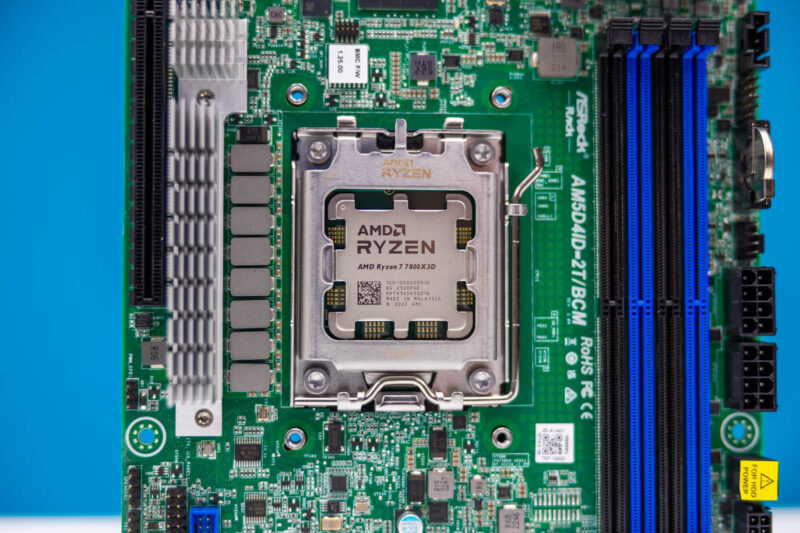
We already covered using the AMD Ryzen 7 7800X3D. Performance of that was about spot on a consumer motherboard with standard non-overclocked settings which makes it quite exciting. Using ECC memory alongside the chip is also great.
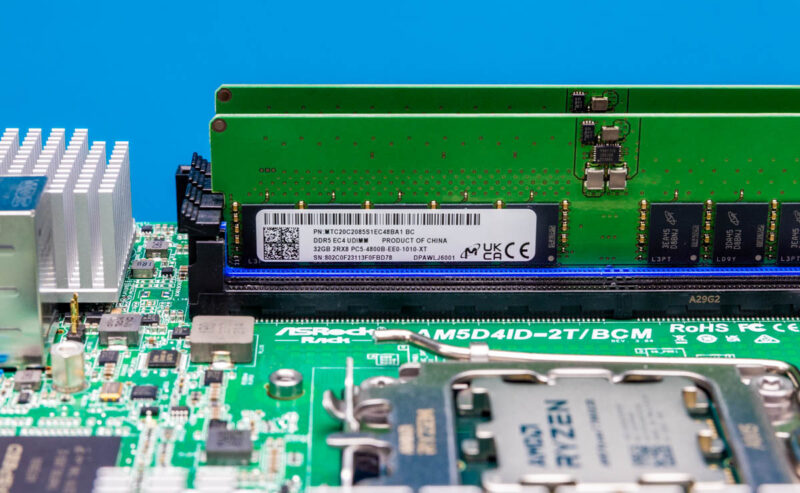
Starting the system up, it booted immediately and without issue.
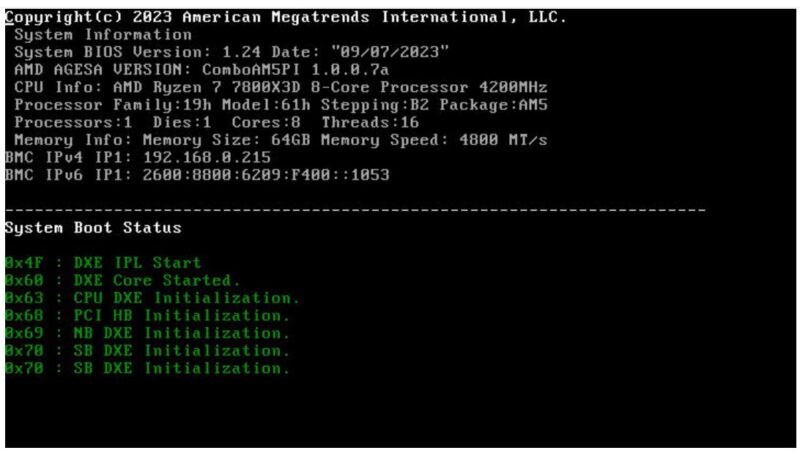
We installed Proxmox VE on the system and then re-installed Proxmox VE 8.1 on the system so that article was done on this platform.
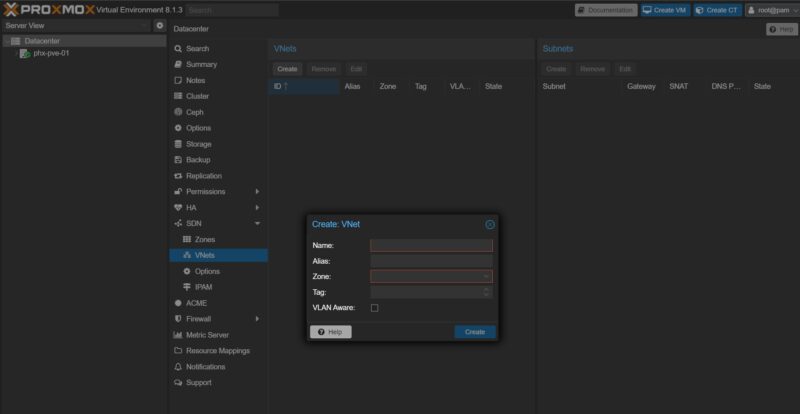
For the system, we wanted to do something a little bit fun, so we installed it in the Jonsbo D31 chassis which comes with a HDMI-powered front LCD screen. Since this board has a HDMI output, we had a display output driven by the onboard AMD-integrated GPU. Although the orientation of the screen was a bit annoying, it was still much easier to use than having to hook up a local monitor.
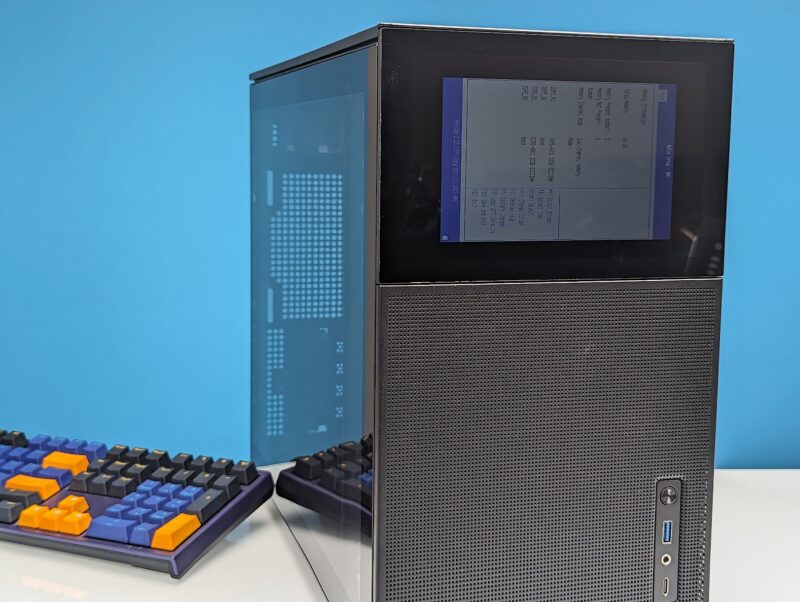
That system with a liquid cooler was perhaps not the easiest to build due to the chassis, but unless it is running a stress test is so eerily quiet it is hard to tell if it is even on. That makes for a very compelling platform with a 96MB L3 cache 8 core and high clock frequency AMD Ryzen CPU, dual 10Gbase-T for networking with a PCIe Gen5 slot for expansion, liquid cooling, and even a built-in display driven by the AMD GPU. Without turning on eco mode or other power tuning, most CPU-only stress tests were putting the build in the 108-120W maximum power consumption range. That means for some low-cost 1A on 120V hosting, one can still use this platform.
Final Words
These small AMD Ryzen motherboards are really awesome. Modern desktop CPUs do not offer huge core counts, but they offer high clock speeds. Compared to older gear they run at significantly lower power budgets and offer modern PCIe I/O and features. With the introduction of the integrated graphics on the newer Ryzen processors, there are an additional set of capabilities that we did not have in previous generations.
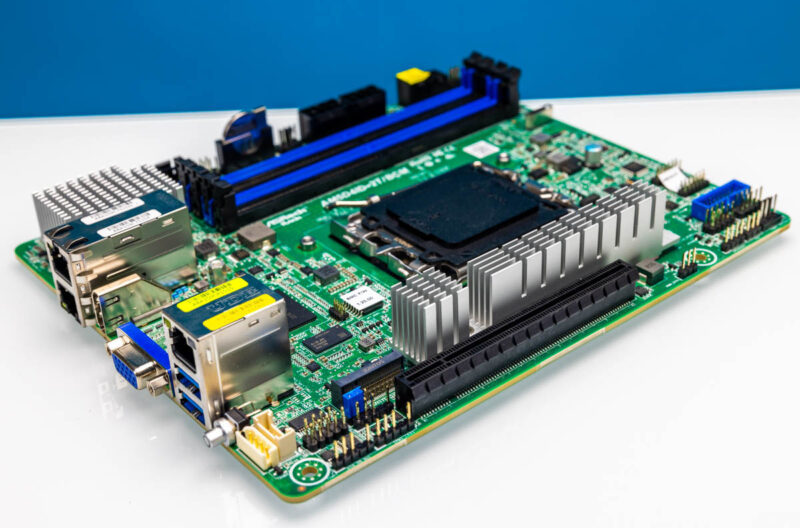
The AM5D4ID-2T/BCM adds 10Gbase-T networking that will help deployments for desktop systems as well as web hosting clusters that often use inexpensive copper for interconnect. Overall, these small low power systems offer a lot in very compact packages which is what has made them so popular over the years. This little motherboard is awesome.
Where to Buy
Here are a few links to the parts that we used in this review.
- AMD Ryzen 7 7800X3D Amazon
- AMD Ryzen 9 7900 Amazon
- ASRock Rack AM5D4ID-2T/BCM Newegg
- Micron 32GB ECC UDIMM Kit Amazon
- Jonsbo D31 Amazon
- be quiet! Pure Loop 2 FX 240mm Amazon
- Thermaltake Toughpower GF A3 750W Amazon
We participate in a number of affiliate programs and may earn a small commission if you purchase using these links.



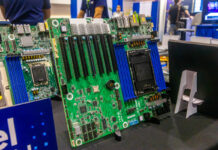
Only 128GB RAM is maximum :-(
Since a Ryzen 7800X3D has only 8 cores, then “only 128GB RAM” results in 16GB/core. For comparison an EPYC server with 128 cores would need 2TB RAM for the same memory to core ratio.
I don’t understand the point of placing a server motherboard in a tower case with a built-in display. For me IPMI is for rack mounted systems without displays in data centers where physical access is restricted.
Along such lines it would be nice to see a review of a do-it-yourself server chassis that are suitable for this motherboard and similar ones.
I didn’t do the review, but I would imagine that 48GB sticks can be used on this platform. So the maximum memory would be 192GB, not 128.
What’s the height of the highest point on this board?
I’m thinking if it would fit in a 1u or 2u rack case for a rackmod.
Nice server board.
Seriously considering this thing for a workstation (I tend to use all my machines over RDP, infact I’m writing this post, over RDP)
Hillarious thinking bsck to all the people that went to such great lengths to try and prove ecc and ryzen was just a myth or didn’t work. Hi truenas forums!
Patrick, could you add a paragraph about the PCH/X300 Knoll activator chip situation with this board, and the implications?
when searching for deep-itx compatible enclosures, there’s a neat trick:
if the case has a flex-atx PSU opposite of the side with the motherboard I/O panel, then it will likely fit the deep itx board – which does not require a builtin PSU.
The short side of a Flex-ATX PSU measures 40mm, which should provide exactly enough clearance for the extra length of the deep mini-itx board.